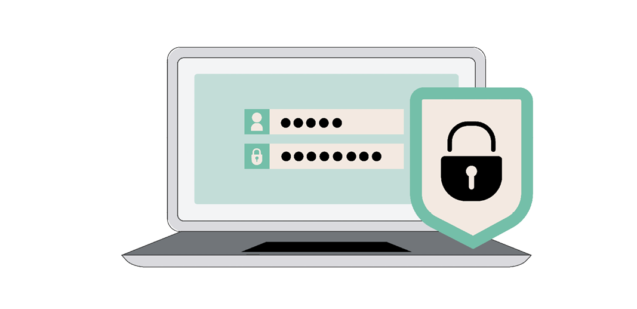Categories

Would it shock you to know that, according to a recent survey by US Bank, only 41% of American households maintain a budget? OK, next question — and don’t worry — we won’t judge. Are you one of those 41%? If you’re not, we’re guessing you know deep down that you probably need a budget. You want to keep better track of where your money goes every month, and you understand the importance of responsibly managing it. But keeping up with all that comes in and all that goes out — especially all that goes out — can be daunting. Almost no one enjoys expense tracking, which is why so many people struggle to keep a budget.
What if we told you that you can easily maintain a simple budget that helps you stay on track financially, guarantees you’re paying down debt, and makes it clear each month what’s safe-to-spend? All without any expense tracking at all?
The 50/20/30 Rule Makes Budgeting Easy
If you are new to the exciting world of budgeting, don’t worry. It doesn’t have to be rocket science. While some people enjoy recording every movie ticket, mocha latte, and Mars Bar, there are easier ways to set up a budget plan to ensure you stay on track in the broad categories of expenditures without getting bogged down counting pennies. One of our favorite simple budgets is the 50/20/30 Rule. So pour yourself a cup of tea, grab a notebook, and pull up a chair.
What exactly is the 50/20/30 Rule?
In short, the 50/20/30 Rule of budgeting is a simple ratio guideline that helps you know how much you should allocate to three broad categories: absolute necessities, savings and debt repayment, and your wants and splurges. It was first proposed by Harvard economist Elizabeth Warren and her daughter, Amelia Warren Tyagi in their 2005 book, All Your Worth: The Ultimate Lifetime Money Plan. Yep, you heard that right. This budget is Harvard-approved, which means it has to be good! It’s also incredibly accessible and great for beginner budgeters.
OK, got it. Now, how do I do create a budget with the 50/20/30 rule?
You’re gonna like this part. You are simply going to figure out how much money you take home each month, and then you are going to split it three ways. We’ll explain. Follow these easy steps:
Step 1: Figure out your take-home pay.
How much is your paycheck after taxes are taken out? If health insurance or 401K funds are deducted, add them back in. You’re going to designate them to one of our three categories. If you are self-employed, remember to factor in the self-employment tax. For the sake of some easy math, let’s say your take home pay bottom line is $3000 each month. We’ll use this figure to build your mock budget.
Step 2: Tally up those non-negotiable expenses — and keep it to 50% or less.
These are your needs. According to Warren’s guidelines, a need is any expenditure that will have a significant negative impact on your quality of life or financial health if skipped. These will include rent or mortgage, utility bills, car payments, insurance, groceries, etc. Now, here’s the tricky part: You say the cable bill is a need, but is it really? This is where you have to weigh things. If your needs push you over that 50% mark, it’s time to trim. Reconsider the cable bill. Buy the store brand toilet tissue — you can do it. Oh, and by the way, this is where you’ll account for that health insurance premium deduction that you added back to your take-home pay. Do what you have to do to stay at or under 50%. With our $3,000 budget, that’s $1,500 available to spend on your needs.
Step 3: Designate 20% of your income to paying debts and building up your savings.
This is the category where you’ll record any efforts you’re making to eliminate your debt — any payments on credit cards and student loans or car and house payments that exceed the minimum payment. The minimum payments, remember, are a need and belong in the 50%. With a take-home pay of $3000, you have $600 to play with for debt reduction, savings, and other long-term financial goals. That’s a lot, and you can always allocate more than 20% if you keep your expenses low.
You’ll also want to use this category to make sure you have an adequate emergency fund. Start with a $1,000 goal as soon as possible, and set a longer-term goal of having three months income in savings for long-term, more serious life emergencies. Now you’re ready to put some money toward retirement. Again, if you’re already contributing toward your retirement through a 401K or other employer-provided program, this is where you’ll record it. Oh, and if you are lucky enough to have one of those employers who matches your contribution up to a certain percentage, by all means do your best to take advantage of that. If you can’t just yet, make it a goal. If you need to open your own retirement plan, Spero has plenty of options.
Step 4: Have Fun! You’ve got 30% left for discretionary spending.
Now comes the fun part. With $3,000 of take-home pay, you have $900 that’s safe-to-spend on anything that you want. Your needs and long-term financial goals are already being met, so the rest is guilt-free, worry-free money for you and your family. This category is for eating out, hobbies, gas, entertainment, travel, treats, and other things that might be important but do not rate up there with needs. Also, remember, just because you have $900 in this category, you don’t have to spend it all. It is never a bad idea to live beneath your means. And if you find that $900 is not enough, go back to your 50% and see where you can trim to free up a little more spending cash.
That wasn’t so hard, was it? The 50/20/30 Rule is a great starting place for beginning budgeters. If you get the hang of it and want to advance to a more detailed approach, that is always an option.
One of the benefits of a membership with Spero is that we are committed to your long-term financial health and prosperity. You are a member of our family and when you do well, we all do well. Spero is here to offer education and support along your journey to financial strength and stability. And one of the first important steps on that journey is making a budget and sticking to it. Our member service experts are here to assist you in any way you need as you take this important step in strengthening your financial health. Call us today and make an appointment to come visit us.



